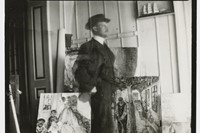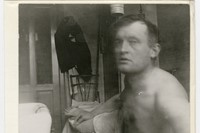Edvard Munch, Norwegian painter, printmaker and draughtsman, was a man of many talents and interests. A key player in the Symbolist movement of the 1890s, he was also one of the earliest precursors of the Expressionism, pioneering an emotionally
Who: Edvard Munch, Norwegian painter, printmaker and draughtsman, was a man of many talents and interests. A key player in the Symbolist movement of the 1890s, he was also one of the earliest precursors of Expressionism, pioneering an emotionally charged, deeply subjective approach to subject matter – exemplified in his most famous work, The (frequently pilfered) Scream. A lesser-known side to Munch, however, is his great fascination with the different forms of representation of his time and the affect that these had upon his work: the subject of the Centre Pompidou’s current exhibition, Edvard Munch, The Modern Eye, set to open at Tate Modern in June.
What: The display features nearly 140 of Munch's works, including a rich selection of his major paintings and works on paper, as well as his experiments with photography and film. It is divided into nine sections, each exploring a different facet of the artist's modernity; from his love of cinema (he was a great Charlie Chaplin fan), which inspired his own films of urban street life and his family members; to his interest in autobiography, reflected in his many self-portrait photographs (he is thought to be the first to photograph himself using a camera held in his outstretched hand). The exhibition also explores Munch's obsession with repetition in his quest "to render visible the soul of each picture", comparing separate versions of the same motifs carried out in different mediums or set against new backdrops.
"Munch went to the cinema, listened to the radio, read the foreign press and subscribed to a number of illustrated magazines...He was in short a man of his time, and this has left its stamp on his work"
Why: The aim of the exhibition is to show that Munch, so often thought of as a 19th century artist and historically placed alongside the likes of Van Gogh and Gaugin, was also very much a 20th century man – indeed three-quarters of his artistic output was produced then. As curators Angela Lampe and Clément Chéroux explain: "In the first decades of the 20th century, Munch went to the cinema, listened to the radio, read the foreign press and subscribed to a number of illustrated magazines...He was in short a man of his time, and this has left its stamp on his work. This is what the exhibition attempts to show."
Edvard Munch, The Modern Eye is on display at the Centre Pompidou, Paris until January 23 and runs at Tate Modern June 28 – October 14.
Text by Daisy Woodward
![Solen [The Sun], 1910-13](https://images-prod.anothermag.com/734/azure/another-prod/180/8/188988.jpg)


![Barn i gata [Children in the Street], 1910-15](https://images-prod.anothermag.com/200/0-0-640-426/azure/another-prod/180/8/188972.jpg)
![Pubertet [Puberty], 1894-95](https://images-prod.anothermag.com/200/0-56-576-384/azure/another-prod/180/8/188976.jpg)
![Pubertet [Puberty], 1914-16](https://images-prod.anothermag.com/200/0-39-572-381/azure/another-prod/180/8/188980.jpg)
